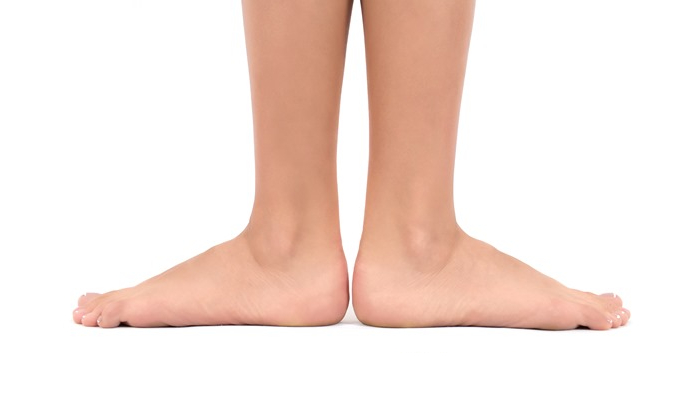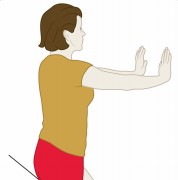

When a child with flexible flatfoot stands, the arch of the foot disappears. Upon sitting or when the child is on tiptoes, the arch reappears. Although called “flexible flatfoot,” this condition always affects both feet.
Flexible flatfoot is common in children. While parents often worry that an abnormally low or absent arch in a child’s foot will lead to permanent deformity or disability, most children eventually outgrow flexible flatfoot without developing any problems in adulthood. The condition is usually painless and does not interfere with walking or participation in sports. If your child’s flexible flatfoot does not cause pain or discomfort, no treatment is needed.
Description
A flexible flatfoot is considered to be a variation of a normal foot. The muscles and joints of a flexible flatfoot function normally.
Most children are born with very little arch in the feet. As they grow and walk, the soft tissues along the bottom of the feet tighten, which gradually shapes the arches of the feet.
Children with flexible flatfoot often do not begin to develop an arch until the age of 5 years or older. Some children never develop an arch.
If flexible flatfoot continues into adolescence, a child may experience aching pain along the bottom of the foot. A doctor should be consulted if a child’s flatfeet cause persistent pain.
Doctor Examination

To make the diagnosis, your doctor will examine your child to rule out other types of flatfeet that may require treatment. These include flexible flatfoot with a tight heel cord (Achilles tendon), or rigid flatfoot, which may be a more serious condition.
Tell your doctor if anyone else in the family is flatfooted, as this may be an inherited condition. Your doctor will need to know about any known neurological or muscular disease in your child.
Your doctor will look for patterns of wear on your child’s everyday shoes. He or she may ask your child to sit, stand, raise the toes while standing, and stand on tiptoe.
In addition, your doctor will probably examine your child’s heel cord (Achilles tendon) for tightness and may check the bottom of your child’s foot for calluses.
Treatment
Nonsurgical Treatment
Treatment for flexible flatfoot is required only if your child is experiencing discomfort from the condition.
- Stretching exercises. If your child has activity-related pain or tiredness in the foot, ankle, or leg, your doctor may recommend stretching exercises for the heel cord.
- Heel Cord Stretch
Lean forward against a wall with one leg in front of the other. Straighten your back leg and press your heel into the floor. Your front knee is bent. Hold for 15 to 30 seconds. Keep both heels flat on the floor. Point the toes of your back foot toward the heel of your front foot. This stretch should be performed three times on each leg. -

If you’re experiencing pain associated with flat feet. We at Orthowin Clinic, get advice & treatment options for Flexible Flatfoot from Dr. Chetan Oswal one of the best foot and ankle specialists in Pune, Pimpri Chinchwad PCMC. Shoe inserts (orthotics). If discomfort continues, your doctor may recommend shoe inserts. Soft-, firm-, and hard-molded arch supports may help relieve your child’s foot pain and fatigue. They can also extend the life of your child’s shoes, which may otherwise wear unevenly. In most cases, there is little benefit to using custom-molded arch supports. Over-the-counter arch supports, which are available at most sporting goods and running shoe stores, can be just as effective and are much less expensive to replace as your child grows. Online retailers often have inserts in difficult to-find sizes.
- Additional treatment. Your doctor may prescribe physical therapy or casting if your child has flexible flatfoot with tight heel cords.

Surgical Treatment
Occasionally, surgical treatment may be recommended for an adolescent with persistent pain. Surgery is typically performed to create an arch in the foot and lengthen tendons that may be tight and causing pain. The surgery is usually performed in stages. One foot is corrected then, after several months of recovery, the second surgery takes place.
In a small number of children, flexible flatfeet become rigid instead of correcting with growth. These cases may need further medical evaluation.
Our Services
Book Appointment
Book Your Appointment Today
We welcome your questions Do you have questions regarding your own situation? Do you actually want to resolve your problem and not just temporarily cover up the pain?




